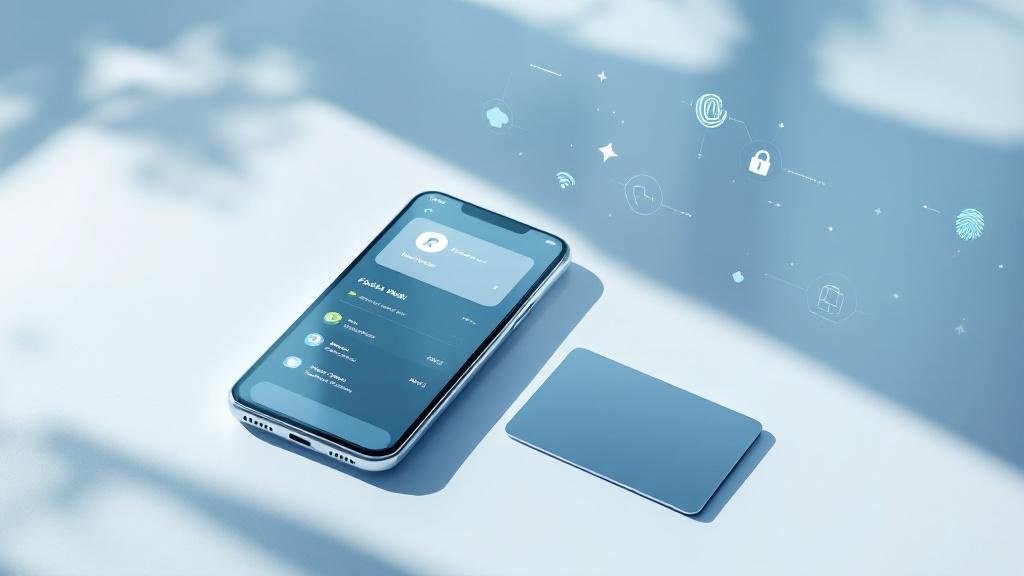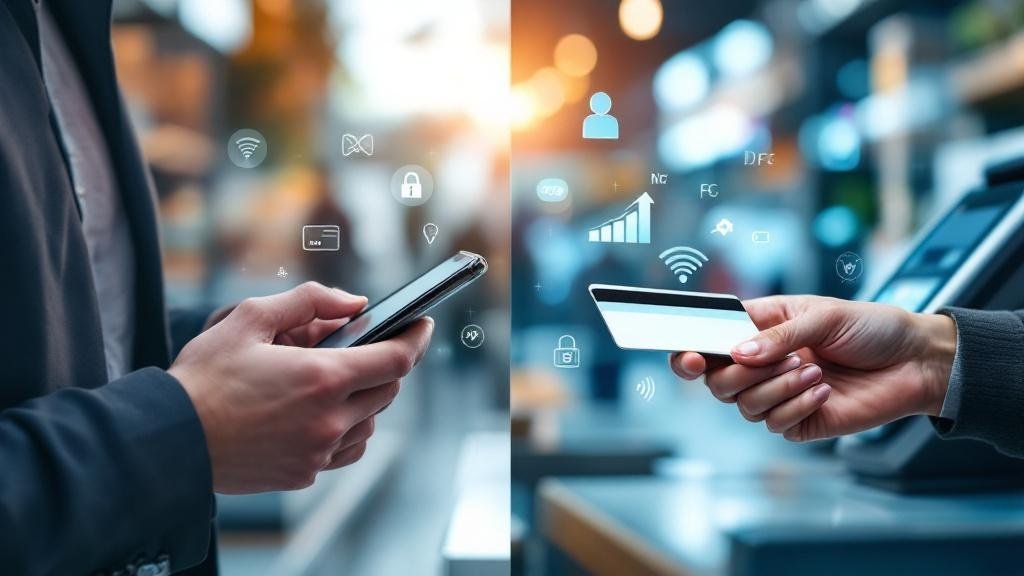In today’s fast-moving digital world, traditional cash and even physical cards are being replaced by smarter, safer alternatives. Among the most popular cashless solutions are digital wallets and prepaid cards. But when it comes to choosing the right one for your lifestyle or business, the digital wallet vs prepaid card debate becomes crucial.
So which one should you use? Let’s break down the differences between digital wallets and prepaid cards, their pros and cons, and help you make an informed decision based on real-world usage, cost, and security.
🔍 What Is a Digital Wallet?
A digital wallet, also known as an e-wallet, is a mobile or web-based app that securely stores your payment information. Think of it as a virtual purse that can hold your credit cards, debit cards, loyalty cards, and sometimes even your government-issued ID or driver’s license.
✅ Key Digital Wallet Features:
-
Contactless payments using Near Field Communication (NFC)
-
Peer-to-peer payments (like sending money to a friend)
-
Bill payments and recharges
-
Secure encryption and biometrics
-
No physical card needed
Popular Digital Wallets:
-
Apple Pay
-
Google Pay
-
Samsung Wallet
-
Paytm, PhonePe (India)
-
PayPal
💳 What Is a Prepaid Card?
A prepaid card is a reloadable payment card that isn’t linked to a bank account. You load money onto the card, and that becomes your spending limit.
Unlike credit cards, there’s no borrowing involved. And unlike debit cards, you don’t need a bank account. It works just like a debit card at POS machines, ATMs, and for online purchases.
✅ Common Prepaid Card Features:
-
Reloadable balance via cash, bank transfer, or wallet
-
Spending limits to control budgeting
-
Can be used for ATM withdrawals
-
Offline and online transactions
-
Some offer multi-currency support for travelers
⚖️ Digital Wallet vs Prepaid Card: Key Differences
Here’s a clear comparison table of digital wallet vs prepaid card features:
| Feature | Digital Wallet | Prepaid Card |
|---|---|---|
| Physical Form | App-based, no card required | Physical card issued |
| Setup Requirement | Smartphone & internet | Physical card and KYC (in some cases) |
| Link to Bank Account | Optional | Not required |
| Security | High (biometric, PIN, encryption) | Moderate (PIN-based) |
| Usage | Online, offline (NFC), bill pay, P2P | POS, ATM, online shopping |
| Reloading | Bank account, UPI, credit card | Bank transfer, cash, mobile wallet |
| Target Users | Smartphone users, tech-savvy | Unbanked users, controlled spenders |
✅ Pros and Cons of Digital Wallets
Pros:
-
Instant mobile payments
-
Secure authentication with fingerprint/Face ID
-
Supports loyalty programs and rewards
-
No need to carry multiple cards
-
Perfect for peer-to-peer payments
Cons:
-
Requires smartphone and internet
-
Not accepted at all physical outlets
-
Can be a target for phishing if not careful
✅ Pros and Cons of Prepaid Cards
Pros:
-
Great for budgeting and limiting spend
-
Useful for people with no bank account
-
Accepted widely like a debit card
-
Can be used at ATMs and offline stores
Cons:
-
May have fees for loading, ATM use, inactivity
-
Requires physical card handling
-
Lower security than e-wallets
-
Some have limited features compared to mobile wallets
📲 Digital Wallet vs Debit Card: How Do They Differ?
Many people confuse digital wallets with debit cards, especially since both can pull money from your bank.
Here’s the difference:
-
Debit cards are physical cards linked directly to your bank.
-
Digital wallets store virtual versions of your debit/credit card and can facilitate cardless payment options.
So, while both access your bank funds, a digital wallet acts as a secure middle layer with extra features like encryption and tokenization.
🛍️ Prepaid Card vs Mobile Wallet: Which One’s Better?
Choosing between a prepaid card and mobile wallet depends on your needs:
-
Use a prepaid card if you:
-
Want to control spending for kids or employees
-
Don’t have a bank account
-
Need a multi-currency prepaid card for travel
-
-
Use a digital wallet if you:
-
Prefer contactless mobile payments
-
Want advanced features like e-wallet security encryption
-
Make frequent peer-to-peer transfers
-
💡 Real-Life Use Cases
1. Travelers
Digital wallets may not work in areas without NFC or poor mobile signal. In that case, multi-currency prepaid cards with offline functionality are better.
2. Teenagers and Students
Parents often use reloadable prepaid cards to give teens a spending limit while teaching them budgeting.
3. Street Vendors and Small Merchants
Digital wallets like Paytm or Google Pay allow cashless business without complex bank setups—ideal for financial inclusion in emerging markets.
💰 Cost Comparison: Digital Wallet vs Prepaid Card
| Cost Type | Digital Wallet | Prepaid Card |
|---|---|---|
| Setup Fee | Free | May charge ₹100–₹500 |
| Annual Fees | Mostly Free | ₹100–₹300 per year |
| Reload Fees | Usually Free | Some charge 1–2% |
| Transaction Fee | Free (domestic) | May apply for cross-border |
| ATM Withdrawals | Not applicable | ₹10–₹25 per withdrawal |
🔐 Is Digital Wallet Safer Than Prepaid Card?
Yes, in most cases. Digital wallets offer:
-
Biometric login
-
Device-level encryption
-
Real-time fraud alerts
-
No physical card = less theft risk
However, always use trusted apps and avoid public Wi-Fi when transacting to keep your wallet secure.
Prepaid cards are still secure, but if lost or stolen, anyone can use them unless a PIN is set.
📲 Digital Payment Methods Comparison
| Payment Method | Best For | Security | Availability |
|---|---|---|---|
| Digital Wallet | Daily use, fast payments | Very High | Online & NFC POS |
| Prepaid Card | Budgeting, travel, gifting | Moderate | POS, ATM, Online |
| Debit Card | Bank-linked spending | High | Universal |
| Credit Card | Credit building, rewards | High | Universal |
🧠 Conclusion: Which Is Better?
If you’re looking for ease, speed, and innovation, digital wallets are the future. They’re perfect for anyone who uses a smartphone and wants fast, secure, cardless payments.
But if you need offline usability, ATM access, or a way to manage spending without a bank account, prepaid cards are ideal.
💡 Pro Tip: Combine both—use a prepaid card for certain offline purchases and load it into a digital wallet for mobile transactions!
❓ FAQs – Digital Wallet vs Prepaid Card
1. How do prepaid cards work?
Prepaid cards are loaded with a fixed amount of money, which you can use to make purchases or withdraw cash. Once the balance is used up, you must reload it.
2. Can I use a prepaid card in a digital wallet?
Yes, many prepaid cards can be added to digital wallets like Google Pay or Apple Pay, allowing for mobile payments using NFC.
3. What are the security features of digital wallets?
Digital wallets use encryption, tokenization, and biometric verification (like Face ID or fingerprint) to secure transactions and personal data.
4. Which offers more financial inclusion—digital wallets or prepaid cards?
Both offer access to cashless systems for unbanked users. Prepaid cards are better for those without smartphones, while digital wallets help expand mobile financial services.
5. Are digital wallets accepted everywhere?
Not everywhere. While adoption is growing, some small merchants or rural areas may still require cash or physical cards.
6. What are reloadable cards used for?
They’re ideal for budgeting, gift-giving, employee reimbursements, and international travel using multi-currency options.
7. Are mobile wallets replacing cards completely?
Not yet. Mobile wallets are growing rapidly, but cards remain important, especially where contactless infrastructure is still developing.








Comments (0)